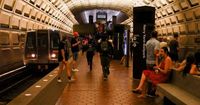In a move that’s turning heads across the nation, West Virginia Governor Patrick Morrisey announced on August 16, 2025, that his state would send between 300 and 400 National Guard troops—along with equipment and other resources—to Washington, D.C. The deployment, described by Morrisey’s office as "a show of commitment to public safety and regional cooperation," comes at the direct request of President Donald Trump, who has ordered a significant federal presence in the capital to address what he calls a crime and homelessness emergency.
The timing of the deployment is notable. According to Reuters, the order for West Virginia’s National Guard came late Friday, August 15, leaving state officials scrambling to organize the logistics. Drew Galang, a spokesperson for Governor Morrisey, confirmed that the Guard was working swiftly to mobilize both personnel and equipment for the journey to D.C.
President Trump’s strategy, unveiled earlier in the week, involves deploying hundreds of National Guard troops to Washington and temporarily assuming control of the city’s police department—a move that has sparked legal and political controversy. The White House, as reported by Reuters, stated that the influx of National Guard troops is intended to "protect federal assets, create a safe environment for law enforcement officials to carry out their duties when required, and provide a visible presence to deter crime."
But what does this deployment actually look like on the ground? The troops, according to both Reuters and Bloomberg, are not currently making arrests. Instead, they’re conducting patrols—on foot and in vehicles—around high-profile areas such as the National Mall and Union Station. The White House also noted that while the National Guard members are not actively arresting individuals, a formal order is expected soon, authorizing mostly military police officers to carry sidearms. For now, their weapons remain nearby, typically stored in vehicles, but the visible presence alone is intended to send a strong message.
The deployment has been framed by the Trump administration as a necessary response to what it characterizes as a surge in crime and homelessness in the nation’s capital. Yet, according to U.S. Justice Department data cited by Reuters, violent crime in Washington actually hit a 30-year low in 2024. This statistic has not gone unnoticed by local officials, who have questioned the necessity and motivations behind the federal intervention.
Indeed, the relationship between federal authorities and D.C. officials has been anything but smooth. On August 15, a day before West Virginia’s deployment was announced, District of Columbia officials and the Trump administration reached a deal to keep D.C. Mayor Muriel Bowser’s appointed police chief, Pamela Smith, in charge of the city’s police department. This agreement followed a lawsuit filed by D.C. Attorney General Brian Schwalb aiming to block the federal takeover of the department. The compromise, hammered out after tense negotiations, allows local leadership to remain in place despite the heavy federal presence.
Governor Morrisey’s statement, released on Saturday, August 16, made no mention of any direct communication with city officials in Washington. Instead, the focus was firmly on supporting the Trump administration’s plan. "We are providing equipment and specialized training alongside the approximately 300-400 skilled personnel as directed," the statement read, emphasizing West Virginia’s commitment to regional cooperation and public safety.
For many in Washington, the arrival of out-of-state troops and armored vehicles has been a jarring sight. Photos captured by Bloomberg show National Guard members and military equipment stationed near the Washington Monument, underscoring the seriousness of the federal response. Meanwhile, FBI and Diplomatic Security Service agents were seen running at the Navy Yard–Ballpark metro station, as reported by Reuters, adding to the sense of heightened security and tension.
Behind the scenes, the legal and constitutional questions are swirling. The National Guard, as a rule, answers to the governors of the 50 states—except when called into federal service. The D.C. National Guard is unique in that it reports directly to the president. This distinction has become a flashpoint in the ongoing debate about federal authority versus local self-governance in the capital. President Trump, who has made no secret of his desire to expand presidential powers in his second term, has suggested that similar actions could be taken in other Democratic-controlled cities. However, as Reuters points out, the legal pathway for such deployments is anything but clear. A federal judge in San Francisco is expected to rule in the coming weeks on whether Trump violated the law by sending National Guard troops to Los Angeles in June without the approval of California Governor Gavin Newsom.
While the administration maintains that the deployment is about keeping Washington safe, critics argue that it’s an overreach—especially given the city’s recent drop in violent crime. The optics of military vehicles rolling through the streets and the prospect of National Guard members authorized to carry firearms have reignited debates about the militarization of law enforcement and the balance of power between federal and local governments.
As of now, the National Guard’s role remains largely supportive. The troops are providing a visible deterrent, assisting with logistics, and standing by should their presence be needed for more direct involvement. The White House has been clear: the National Guard is not engaging in law enforcement activities beyond patrols, and no arrests are being made by these troops at this time.
Still, with a formal order authorizing the carrying of firearms expected soon, the situation could shift rapidly. The administration’s next moves—and the response from both local officials and the courts—will be closely watched, not just in Washington but in cities across the country. After all, the precedent set here could shape the federal government’s approach to public safety and local autonomy for years to come.
For now, Washington finds itself at the center of a high-stakes experiment in federal intervention, with the eyes of the nation—and the world—watching to see what happens next.

